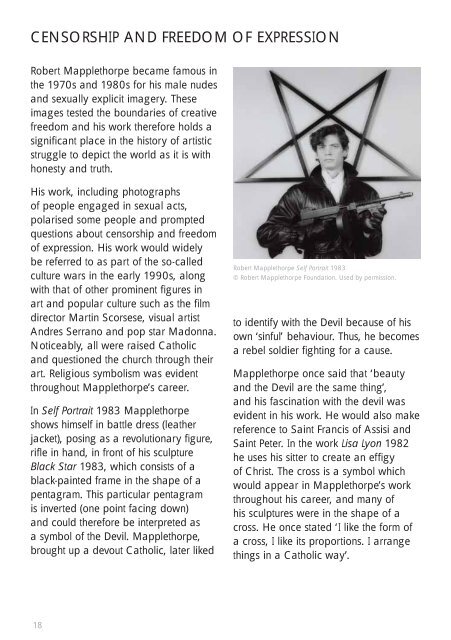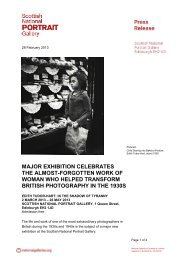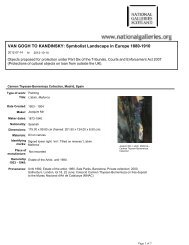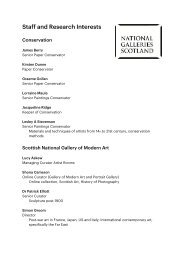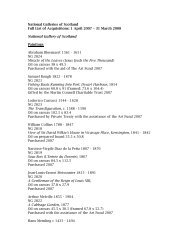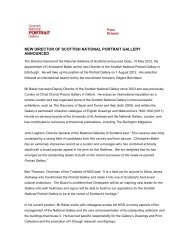ROBERT MAPPLETHORPE - Tate
ROBERT MAPPLETHORPE - Tate
ROBERT MAPPLETHORPE - Tate
You also want an ePaper? Increase the reach of your titles
YUMPU automatically turns print PDFs into web optimized ePapers that Google loves.
CENSORSHIP AND FREEDOM OF EXPRESSION<br />
Robert Mapplethorpe became famous in<br />
the 1970s and 1980s for his male nudes<br />
and sexually explicit imagery. These<br />
images tested the boundaries of creative<br />
freedom and his work therefore holds a<br />
signifi cant place in the history of artistic<br />
struggle to depict the world as it is with<br />
honesty and truth.<br />
His work, including photographs<br />
of people engaged in sexual acts,<br />
polarised some people and prompted<br />
questions about censorship and freedom<br />
of expression. His work would widely<br />
be referred to as part of the so-called<br />
culture wars in the early 1990s, along<br />
with that of other prominent fi gures in<br />
art and popular culture such as the fi lm<br />
director Martin Scorsese, visual artist<br />
Andres Serrano and pop star Madonna.<br />
Noticeably, all were raised Catholic<br />
and questioned the church through their<br />
art. Religious symbolism was evident<br />
throughout Mapplethorpe’s career.<br />
In Self Portrait 1983 Mapplethorpe<br />
shows himself in battle dress (leather<br />
jacket), posing as a revolutionary fi gure,<br />
rifl e in hand, in front of his sculpture<br />
Black Star 1983, which consists of a<br />
black-painted frame in the shape of a<br />
pentagram. This particular pentagram<br />
is inverted (one point facing down)<br />
and could therefore be interpreted as<br />
a symbol of the Devil. Mapplethorpe,<br />
brought up a devout Catholic, later liked<br />
18<br />
Robert Mapplethorpe Self Portrait 1983<br />
© Robert Mapplethorpe Foundation. Used by permission.<br />
to identify with the Devil because of his<br />
own ‘sinful’ behaviour. Thus, he becomes<br />
a rebel soldier fi ghting for a cause.<br />
Mapplethorpe once said that ‘beauty<br />
and the Devil are the same thing’,<br />
and his fascination with the devil was<br />
evident in his work. He would also make<br />
reference to Saint Francis of Assisi and<br />
Saint Peter. In the work Lisa Lyon 1982<br />
he uses his sitter to create an effi gy<br />
of Christ. The cross is a symbol which<br />
would appear in Mapplethorpe’s work<br />
throughout his career, and many of<br />
his sculptures were in the shape of a<br />
cross. He once stated ‘I like the form of<br />
a cross, I like its proportions. I arrange<br />
things in a Catholic way’.


